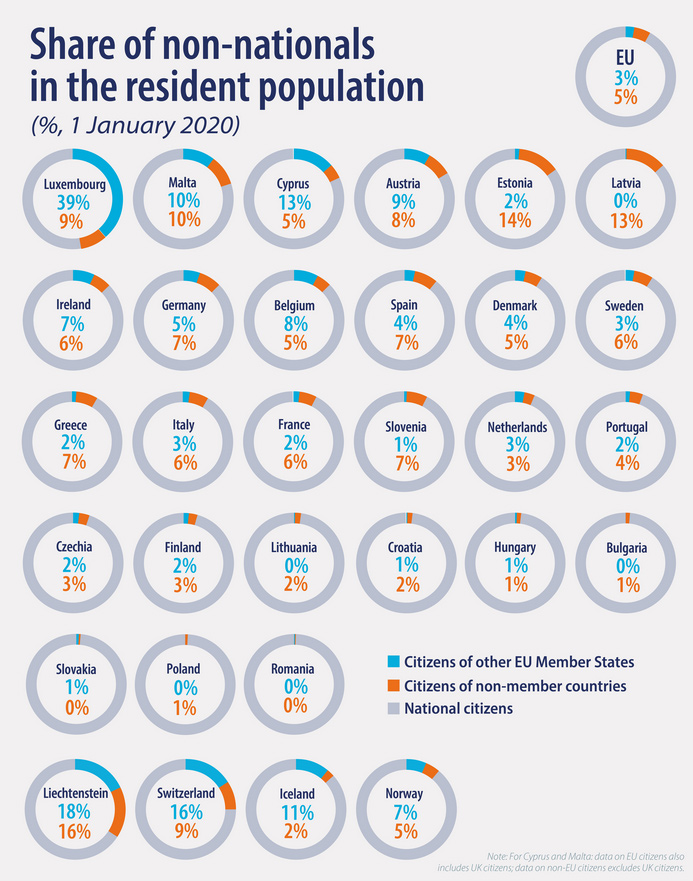Immigration is still a recent phenomenon in Finland, but it gives rise to heated debates among politicians and citizens alike. And problems related to immigrants are making a growing number of headlines in the Finnish and European press.
However, the presence of foreigners is still a very minority phenomenon, no matter if we are talking about people from outside the European Union (EU) or citizens from other European member-states.
According to the most recent data from the European statistical office (Eurostat), on 1 January 23 million citizens of a non-member country lived in the EU, representing 5.1% of the block's population.
In addition, there were 13.5 million people living in one of the EU Member States with the citizenship of another EU Member State, representing 3% of the EU population.
In Finland those percentages are lower. In fact, in the ranking of countries with the most immigrants, Finland appears last after the other Western European countries, situated among several Eastern European states.
The 5.5 million country has not so far been a major pole of attraction for migrants, despite its good social indicators and its reputation as a 'country of happiness'. Only 3% of the country's population are non-EU citizens.
But this is not only a matter of greater or lesser generosity on the part of the authorities when granting residence permits. Finland has not so far been one of the favorite countries for citizens of other EU member states to live in either. Only 2% of Finland's population are from other EU member-states.

Source: Eurostat.
Highest, lowest shares in the EU
In relative terms, the EU Member State with the highest share of non-national citizens was Luxembourg (47% of its total population).
A high proportion of foreign citizens (10% or more of the resident population) was also observed in Malta, Cyprus, Austria, Estonia, Latvia, Ireland, Germany, Belgium and Spain.
In contrast, non-nationals represented less than 1% of the population in Poland and Romania.
In most EU Member States, the majority of non-nationals were citizens of non-EU countries.
Only in Belgium, Ireland, Luxembourg, Austria and Slovakia the non-nationals were mainly citizens of another EU Member State.










